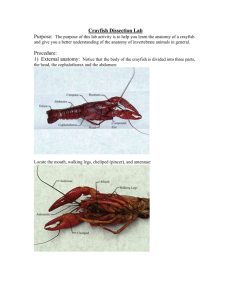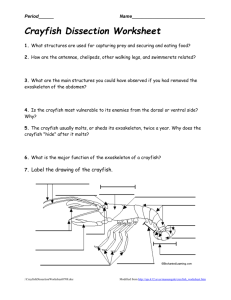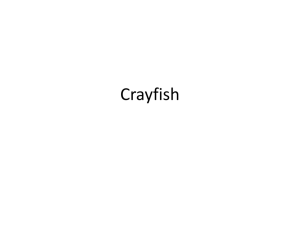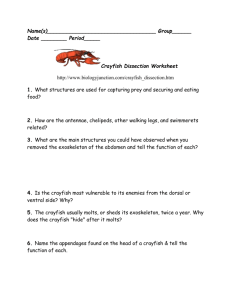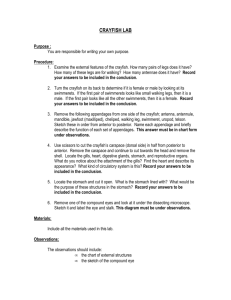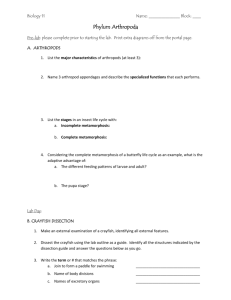Crayfish Dissection Pre-Lab Worksheet
advertisement
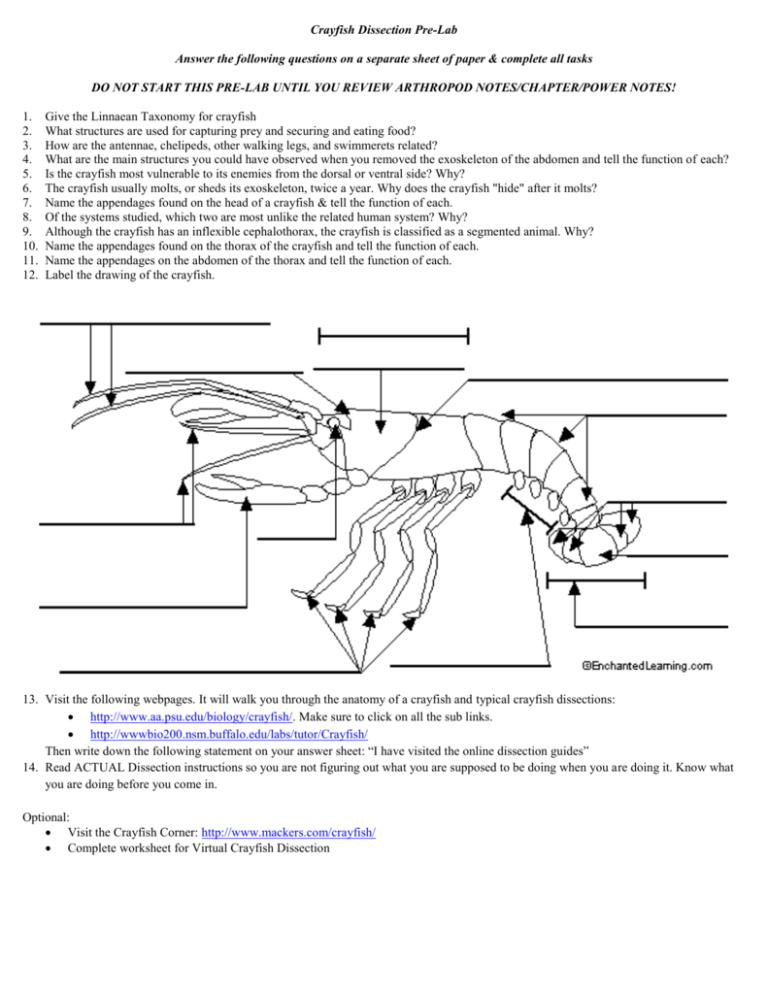
Crayfish Dissection Pre-Lab Answer the following questions on a separate sheet of paper & complete all tasks DO NOT START THIS PRE-LAB UNTIL YOU REVIEW ARTHROPOD NOTES/CHAPTER/POWER NOTES! 1. 2. 3. 4. 5. 6. 7. 8. 9. 10. 11. 12. Give the Linnaean Taxonomy for crayfish What structures are used for capturing prey and securing and eating food? How are the antennae, chelipeds, other walking legs, and swimmerets related? What are the main structures you could have observed when you removed the exoskeleton of the abdomen and tell the function of each? Is the crayfish most vulnerable to its enemies from the dorsal or ventral side? Why? The crayfish usually molts, or sheds its exoskeleton, twice a year. Why does the crayfish "hide" after it molts? Name the appendages found on the head of a crayfish & tell the function of each. Of the systems studied, which two are most unlike the related human system? Why? Although the crayfish has an inflexible cephalothorax, the crayfish is classified as a segmented animal. Why? Name the appendages found on the thorax of the crayfish and tell the function of each. Name the appendages on the abdomen of the thorax and tell the function of each. Label the drawing of the crayfish. 13. Visit the following webpages. It will walk you through the anatomy of a crayfish and typical crayfish dissections: http://www.aa.psu.edu/biology/crayfish/. Make sure to click on all the sub links. http://wwwbio200.nsm.buffalo.edu/labs/tutor/Crayfish/ Then write down the following statement on your answer sheet: “I have visited the online dissection guides” 14. Read ACTUAL Dissection instructions so you are not figuring out what you are supposed to be doing when you are doing it. Know what you are doing before you come in. Optional: Visit the Crayfish Corner: http://www.mackers.com/crayfish/ Complete worksheet for Virtual Crayfish Dissection
